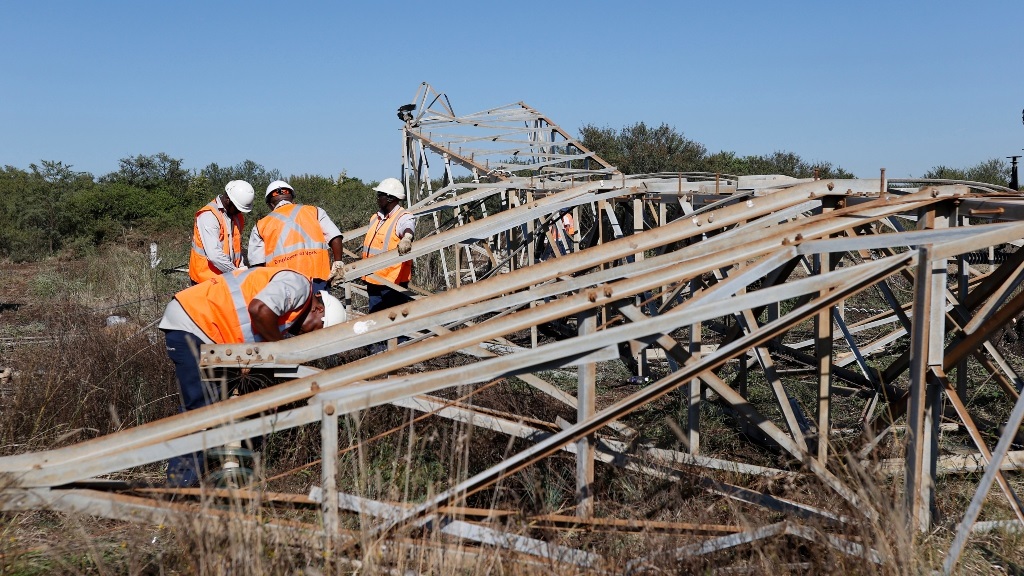
Eskom staff work on electricity pylons that collapsed. (Phill Magakoe/Gallo Images)
- Repairs to four damaged pylons in Nelson Mandela Bay have been completed.
- Electricity was restored to multiple suburbs on Sunday.
- The network was damaged by severe weather last month.
Power has been restored to homes in Nelson Mandela Bay, after severe weather caused a widespread outage in August.
All residents were reconnected on Sunday, according to the Nelson Mandela Bay municipality.
The fault on the 132kV overhead line, caused by gale force winds on 23 August 2024, resulted in the collapse of four pylons and affected the electrical supply from the Summerstrand and Arlington substations.
An assessment of the damage showed that it would take two weeks to restore electricity, but the estimate was later revised to seven days.
"We are pleased to announce that Eskom and the contractor successfully completed all the work on target, and all customers were reconnected to the network on 1 September 2024," the municipality said.
"While there are still some teething problems following the restoration of supply on 31 August, these were anticipated due to the prolonged outage and complexity of the restoration efforts."
READ | Over R1bn needed to fix Nelson Mandela Bay electricity issues after collapse of towers - Ramokgopa
News24 previously reported that Electricity and Energy Minister Kgosientsho Ramokgopa said more than R1 billion was needed over five years to stabilise the metro's electricity issues.
Power Restored!
We are thrilled to announce that power has been fully restored to Wards 1, 2, 3, and 4, within the projected 7-days.
This achievement was made possible thanks to the tireless efforts of our technical staff and the support of Eskom. https://t.co/HNSawkIXEF pic.twitter.com/3b9oN0xDzu
Last week, Ramokgopa assessed the four 132 kV overhead transmission towers that were completely crippled by inclement weather.
The damaged towers had already been earmarked for replacement during the current financial year due to damage caused by rust and corrosion because of their proximity to the ocean.
However, the structures folded before they could be replaced.
 (1).png)
 4 months ago
9
4 months ago
9


















